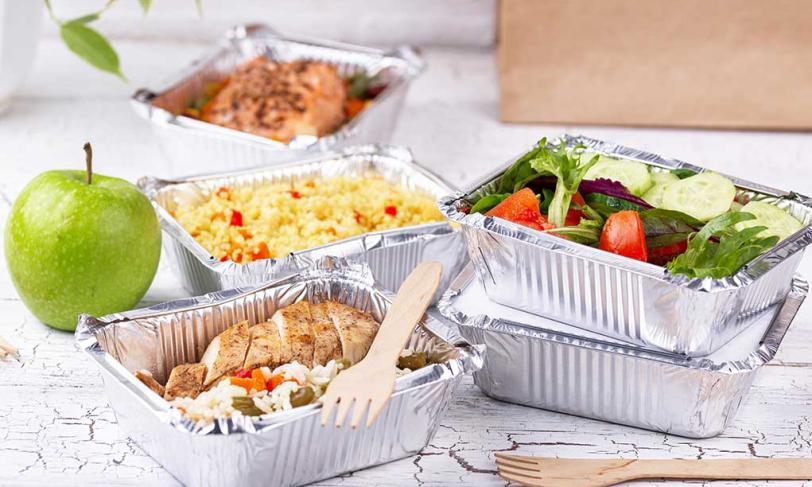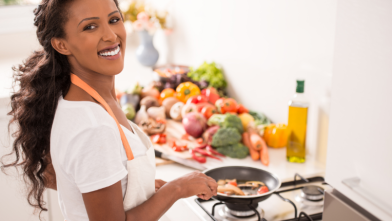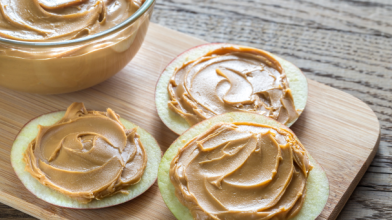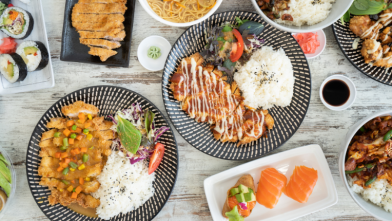The days of going out to dinner may feel like a distant memory for many. Even as restaurants have reopened with limited seating and other safety precautions, not all diners have felt comfortable returning. Instead, people have been relying heavily on takeout and delivery. It can be a welcome stress reliever and a break from the grind of cooking every meal at home, but just like eating out, it may be harder to find healthy options.
Takeout and delivery meals have a reputation as being seriously unhealthy, especially if you’re watching your blood sugar or living with diabetes. But they don’t have to be.
“It’s possible to make healthy choices at nearly any type of restaurant or dining establishment,” says Kristen Smith, MS, RD, Spokesperson for the Academy of Nutrition and Dietetics.
Here are 10 tips for ordering up a delicious dinner from your favorite restaurant without straying from your healthy eating plan.
1. Do Your Research
Ordering take-out gives you more time to look over the menu and check nutrition information. Many places have nutrition information or at least calorie counts listed with their online menus.
But even if that info is absent, you can still benefit from some recon. “Read menu descriptions thoroughly to catch foods that could contain unexpected carbohydrates such as those labeled breaded, crusted, or crispy,” says Smith.
2. Be Cautious with Dairy
Restaurant kitchens are usually much more liberal with high fat dairy foods like cheese, cream and butter than you would be at home. Often, dairy ingredients like sour cream and cheese will be added to a dish that doesn’t really need it, like a burrito that includes guacamole. You can always ask the restaurant to leave it off or look for a leaner menu option.
3. Use the Plate Method
Even when you’re treating yourself to a restaurant meal at home, you can still stick to the Diabetes Plate Method. Remember to fill half your plate with nonstarchy vegetables, one quarter with lean protein, and the rest with carbohydrates.
Most restaurant meals have plenty of carbs and protein, but may be lacking in vegetables. Order an extra vegetable side or add a salad to your meal. Or, prepare an easy vegetable side dish at home to add to your takeout meal.
4. Upgrade Your Carbs
Not all carbs are bad. Whole grains are often packed with fiber and sometimes restaurants will offer whole-grain versions upon request.
“Ask about brown rice, whole wheat bread, and whole wheat pasta options. These options still contain carbohydrates, but do take longer to digest, thus not increasing your blood sugar as rapidly,” says Smith.
5. Watch the Add-Ons
Sometimes you’ll open your takeout bag to find goodies you didn’t even order. These little extras are meant to show good hospitality, but they can derail your otherwise healthy choices.
“Steer clear of bread and chips,” suggests Smith. Those, along with fried noodles in Chinese food orders, are some of the most common extras you’ll find in your takeout. You can also ask the restaurant to leave them out when you place your order to avoid these temptations.
6. Use Your Own Plates
Restaurant servings often represent two, three, or even more servings. Instead of eating straight from the takeout containers, portion out some of the meal onto a plate and leave the rest in the container for tomorrow. Not only will you be eating a more appropriate portion, but you’ll get two meals for one!
7. Focus on Lean Protein and Veggies
When you’re scanning a menu, always zero in on the available lean protein and vegetable options. “At a Chinese restaurant choose steamed chicken and broccoli, or at a Mexican restaurant, choose chicken fajitas,” says Smith. This is a great way to make sure you’re getting the best nutrition and least empty calories for your buck.
8. Skip Fried Foods
Fried food can be extremely alluring, especially if it’s been a while,but deep fried dishes are loaded with fat and carbs and easy to overeat. Most restaurants have plenty of appealing non-fried options, too. Look for things that are seared, baked, grilled, or steamed instead.
9. Make Special Requests
Don’t be shy, you are a paying customer and you should get exactly what you want, especially since most restaurants don’t mind making accommodations. And while making special requests can feel awkward when you’re eating out, ordering online or over the phone can make it much easier.
“Substitute a portion of rice or pasta for steamed vegetables, for example,” suggests Smith. You could also request sauces, which are often calorie dense and poured on with a heavy hand, on the side, or substitute fried foods for items that are grilled or baked.
10. Seek Out Beans
Beans are packed with fiber, which makes them very filling and helps prevent blood sugar spikes. Luckily, they are also delicious and a staple of a wide variety of cuisines.
You’ll find black and pinto bean dishes at Mexican restaurants while white beans are more common in Italian, Greek, or Mediterranean recipes. They’re an overlooked plant-based protein with major health benefits.














